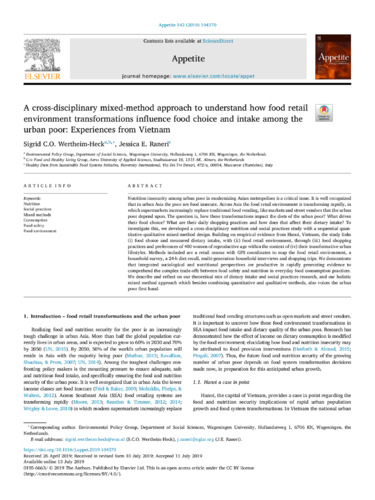A cross-disciplinary mixed-method approach to understand how food retail environment transformations influence food choice and intake among the urban poor: Experiences from Vietnam
Nutrition insecurity among urban poor in modernizing Asian metropolises is a critical issue. It is well recognized that in urban Asia the poor are food insecure. Across Asia the food retail environment is transforming rapidly, in which supermarkets increasingly replace traditional food vending, like markets and street vendors that the urban poor depend upon. The question is, how these transformations impact the diets of the urban poor? What drives their food choice? What are their daily shopping practices and how does that affect their dietary intake? To investigate this, we developed a cross-disciplinary nutrition and social practices study with a sequential quantitative-qualitative mixed-method design. Building on empirical evidence from Hanoi, Vietnam, the study links (i) food choice and measured dietary intake, with (ii) food retail environment, through (iii) food shopping practices and preferences of 400 women of reproductive age within the context of (iv) their transformative urban lifestyles. Methods included are a retail census with GPS coordinates to map the food retail environment, a household survey, a 24-h diet recall, multi-generation household interviews and shopping trips. We demonstrate that integrated sociological and nutritional perspectives are productive in rapidly generating evidence to comprehend the complex trade-offs between food safety and nutrition in everyday food consumption practices. We describe and reflect on our theoretical mix of dietary intake and social practices research, and our holistic mixed method approach which besides combining quantitative and qualitative methods, also voices the urban poor first hand.

